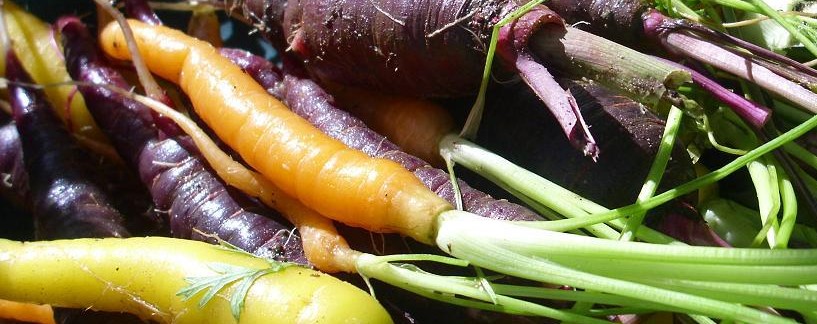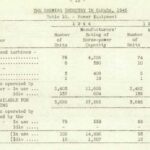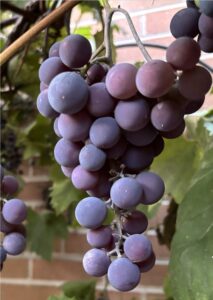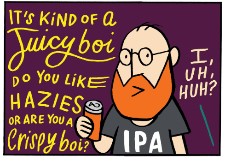The now, the year now past and the eternal. That’s what it’s all about this week. You, kind reader, may consider this too much as task for one person but let us not forget my capacity to do a very poor job. Yet. How about my find of the year or rather my daughter’s find when on the old country visiting family last April. That’s my grandfather up there outside the pub with buddies about 100 years ago. Second from the right.
How have others found the year and summed up 2024? First, Matt looked back with some positive personal thoughts:
One of the reasons I feel like I’ve managed to produce more work this year is because I’ve figured out what I like to call my work-work-life balance. I use the term work-work because, essentially, I have two jobs. In fact it would be better to say I run two separate businesses. Pellicle being one, and my freelance writing, photography and whatever else hopefully comes my way being the other. Not only have I managed to split my time equally between the two, but I’ve also got a lot better at switching off and taking time for myself.
And Jeff looked back, too, but found the big picture less cheery:
You always want to write an annual retrospective in such a way that a through-line connects the points—a ribbon, if you will—so that when you come to the end, you can tie it up in a nice bow, presenting a clear picture of the year just deceased. Well, there is no through-line, no way to tie the whole thing up. We are in a transitional phase and mixed signals are the rule of the day. This applies as much to the larger world as to the beer industry, and I suppose those two are connected.
Yup. I’m also not really looking forward to 2025 in the bigger picture. But, still, I planted my first vegetable seeds of the year yesterday so I am not without a certain level of optimism.
So… let’s go. First up some beery news.
A. The Weekly News Notes
Will I keep these brief? Let’s see. First up, we have Alistair at Fuggled declaring his best beer of the year: Selvedge and Coat Czech 12° pale lager.
Ah…the glories of Czech style pale lager, the second best thing to actual Czech pale lager. When a brewery makes an absolute banger of a Czech style pale lager, they are always going to appear in my end of year review…. This especially true when said Czech style pale lager is either a 10° or 12° I could wax lyrical for days when it comes to Selvedge Brewing’s stunning Coat Czech that came out in the middle of spring this year. Absolutely reeking with Saaz hops, with a rock solid bitterness that scrapes the palate clean with every mouthful – again a reminder of our friend Mr Swiveller’s maxim that “it can’t be tasted in a sip”.
Elsewhere,  I had an interesting experience which again affirmed my love of auto-archiving whether by blog or email. Over on BlueSky, Kevin of Casket Beer, asked if anyone had ever had a Scotch Ale out of a thistle glass. I knew that I had had one in my hand at sometime and it set me off on scrolling through images I posted from around twenty years ago looking at the pub glassware incidentally included. Which then took me to a side-by-side study of great upstate NY beef sandwiches from the years prior to the Obama administration. Which then reminded me of the value of taking photos of anything and everything. That image there? A view of Gritty McDuff’s Freeport location’s bar in 2005. Not particularly pretty but loads of information. Look at the range of booze on offer! But not a thistle glass in sight.
I had an interesting experience which again affirmed my love of auto-archiving whether by blog or email. Over on BlueSky, Kevin of Casket Beer, asked if anyone had ever had a Scotch Ale out of a thistle glass. I knew that I had had one in my hand at sometime and it set me off on scrolling through images I posted from around twenty years ago looking at the pub glassware incidentally included. Which then took me to a side-by-side study of great upstate NY beef sandwiches from the years prior to the Obama administration. Which then reminded me of the value of taking photos of anything and everything. That image there? A view of Gritty McDuff’s Freeport location’s bar in 2005. Not particularly pretty but loads of information. Look at the range of booze on offer! But not a thistle glass in sight.
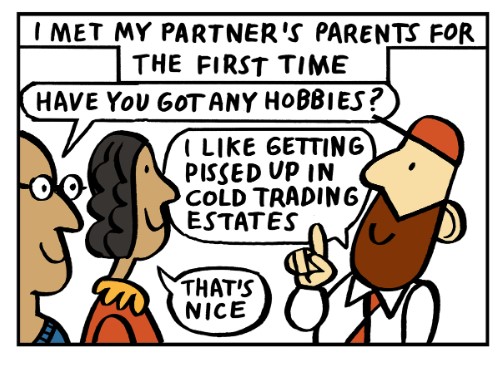 This month’s comic in Pellicle from David Bailey (no relation) has moved another step along the path of questioning and abandonment of the stereotypes of craft fandom. This frame particularly strike me, it’s something of an indictment. There’s not a lot charming about this person, this same person in the New Yorker cover of a decade ago. But times have changed. Along with the losses of breweries and the closings of beer bars that mark the end of an era, this character is now just an object of mockery. A clown. Where’s that going to go in 2025?
This month’s comic in Pellicle from David Bailey (no relation) has moved another step along the path of questioning and abandonment of the stereotypes of craft fandom. This frame particularly strike me, it’s something of an indictment. There’s not a lot charming about this person, this same person in the New Yorker cover of a decade ago. But times have changed. Along with the losses of breweries and the closings of beer bars that mark the end of an era, this character is now just an object of mockery. A clown. Where’s that going to go in 2025?
Mikey Seay alerted me this week to an issue that I had no idea existed:
There is an old beer-head at the taproom I’m at right now. He is in his 60s (probably), all by himself. He’s not hanging out waiting for someone to show up, he is by himself, he’s this for the duration. And this is fine. I am by myself too. There are several dudes by themselves here. Two of them are reading a book. The other is me, sitting on a stool, on a phone, writing into it. So I am not here to shame him for being alone. I am here to shame him for walking around, no agenda. He is just staring off into the abyss, holding his tulip glass, meandering. Non. Stop. Dude, you’re making the rest of us look bad, GO SIT THE FUCK DOWN!
I had no idea. But my eyesight isn’t what it was. And there are all those interesting things on the walls. And those tall barstool chairs set around small wobbly tables are so uncomfortable. But, that being said, as Jeff reminds us, you do not have to drink to get your butt out the door. This month, try #PubJanuary:
Breweries have also been keen on offering nonalcoholic options, and will be happy to support their patrons’ Dry January goals. It’s increasingly common for breweries to make their own NA beer, many make a hop water or NA seltzer, and of course, they all have soda and coffee, too. It may not occur to people, but pubs are pretty good places to go during Dry January.
I would add – meals. If I go for lunch at a pub, half the time I don’t drink much or any alcohol. But I do love me some pub food.
Investing in Russia? Why?
Russian President Vladimir Putin on December 30 signed a decree transferring shares of the foreign brewing company AB InBev Efes Russia to the temporary management of the Russia’s Vmeste group of companies. The move places all the shares of AB InBev Efes Russia, a joint venture between the Belgian brewer and Anadolu Efes of Turkey that launched in 2018, under the temporary control of the Vmeste group, created in August.
Forget Guinness’s manufactured tight supply, there’s an actual beer shortage in Ghana:
…a shortage of Mini Club beer in parts of the Ashanti Region over the past two months. Many of them have gradually become accustomed to seeing empty shelves in their bars. According to local vendors, the shortage was especially hard hit in areas known for their vibrant nightlife, including Krofrom, Ashanti Bantama, Adum, Maxima, Asafo, Kwadaso, and other surrounding communities. Some observers attributed the surge in demand to the mood of residents, particularly supporters of the ruling New Patriotic Party (NPP) and the main opposition National Democratic Congress (NDC), who make up a significant portion of the region’s population
And, something from another time popped up this week, as Molson Coors lot its appeal of the trademark ruling brought and won by Stone… whatever that is now:
Molson Coors Beverage Co. can’t nullify Stone Brewing Co.’s $56 million trademark win over its Keystone Light beer packaging predominantly featuring “STONE,” the Ninth Circuit said. Molson Coors failed to establish a jury or the lower court made reversible error leading to the trademark verdict for the craft brewer, the US Court of Appeals for the Ninth Circuit said in an opinion issued Monday.
Here’s the full ruling if you want to read it for yourself.
OK, that’s the news for this week. On to the Golden Pints of 2024.
B. The Golden Pints
Wot’s a Golden Pint? Ask The Beer Nut or Ed or Rob or Boak and Bailey or Stan! It’s really whatever you like but you need a template that is your own but also not so far off THE template that you look like you don’t understand the template. Tem. Plate. I think it’s from the Dutch for template. Basically, it is a means to dash off a number of very short passages which add up to the appearance of a large piece of work. Just like most books on beer. See? Anyway, here is my take on it all.
Best Beer on Tap: Wild Stout by MacKinnon Brothers, taproom, Bath Ontario. At a gathering of friends and family in early December, I spied this tap and made my way over to the barn cellar’s bar. Thick without being uncious, mint flavoured without that flavouring feel, a perfect roasty stout with an extra touch of local given the mint grew on fence row on the farm.
Best Beer at Home: going strictly but purchases, it has to be Světlý Ležák 12° from Toronto’s Godspeed. I probably had at least 24 cans of this beer in 2024. Precise simplicity with thoughtful depth while also being refreshing enough for post-lawnmowing relaxation. I have a hard time thinking of anything else I would want in a lager. In fact, I just ordered more. On sale and the PMTJ tax waiver applies. Has Alistair tried it?
Oddest Beer Experience: Rochefort 8 at home. I really didn’t like it. Much to my surprise as it is a favourite. I hadn’t had a lot of beer in the autumn before opening this one as a great big treat. And I didn’t like it. At all. I know it was a me thing. But it reminded me of the realization from years ago that I can go through wine stretches and through beer stretches but I really can’t go through beer and wine stretched. 2024 was pretty wine centric.
Best Beer Website: I don’t care for the artificial distinction between blogs and semi-pro beer writing so I would include it all in this category. Newletters. Blogs. Webmags. It’s all just writing on my screen. Winner? Has to be Pellicle. They’ve told the tale. The great success of Pellicle‘s continuing ascent occuring in the year GBH shut up shop after wandering a bit lost for a while is noteworthy, too. But be clear – their success is not relative. Sticking to the topic, employing good humour, steering away from the temptations of pure PR or (worse) lifestyle, aiming for a standard of written excellence as well as a transparent financial self-awareness all work together to earn Pellicle the praise it richly deserves.
Best Individual Bit of Writing: the best written thing? Things abound! How could I possibly choose? Well, let’s start off by saying you beer poets really let us down in 2024. I accept that it is well over a decade since Beer Haiku Daily packed it in but that there is a gap waiting to be filled, all you poetic people. But, seriously… the best bit of beer writing in 2024 is this short sentence: “DEI is so 2021.” Ruvani de Silva’s essay “Apathy Has Rained On Me — On DEI Burnout in the Beer Industry” in Pellicle back in June teaches us a lot of things. Craft beer is loaded with posers. Beer people are not all good people. But most of all she teaches us that is right and proper to write analytical condemnations of the bad things in the beer trade with the hope, foolish or otherwise, that things just might improve. Took a lot of years and a lot of self-annointed beer experts to convince a lot of people that craft beer culture was just great right across the board. Had they not done that, had they not propped it up* but instead acted more like journalists as claimed and written like Ruvani has… would craft beer been in as much of the mess it is today?
Best Climatic Break for the Beer Industry: the end of California’s drought perhaps?
Simon Johnson Award for Best Beer Twitterer: Now, this is a hard one as Simon has been gone and missed for almost 12 years now and the landscape is so different. Just a few months before he passed I asked whether there was anyone more interesting than Simon H Johnson. So we take this selection quite seriously even if Simon wasn’t always that way… or even that other way. Now, we recognize the migration to BlueSky when we calculate these things but there has to be constancy and wit of John Duffy, the Beer Nut. He takes us places that certainly I will likely not see. Like this week a view looking across from a balcony in Brazil or a view looking down from a Balcony in Brazil. And, along with his blog, the most beer focused of all the beery thingies focused.
Best Beery Newsletter: Gotta be The Gulp. The wide range of topics Katie Mather weaves into her writing makes it the one I first go to in my inbox.
Best Local Focus: Fuggled is not as busy a site as it has been in the past (who is?) but if I ever find myself lost and thirsty in Virginia, Alistair is going to find me a way to that good glass of a little something.
Best Book about Beer: Echoing Boak and Bailey, I also have to go with Dr. Christina Wade’s The Devil’s in the Draught Lines: 1,000 years of women in Britain’s beer history. From the first page, you have confidence in the research underlying the writing while also enjoying the pace of the text. As B+B wrote in their review from last April: “It feels effortless, too, and natural.” I particularly liked how Welsh and Scottish history was separated out from the English experience as well as topical comparisons between past practices and current experience of women in British brewing. Her discussion of Elynour Rummyng got my mind going again just like the Lady Eboshi did in Princess Mononoke. Who really was this person… this character… this characature… this political allegory? Got me thinking. Which is exactly what a good book – not just a good beer book – should do.
Final Thoughts: For a bad year in beer, it was a good year for things to read about beer and brewing. Focus and analysis is making headway against the bland boosterism that has hogged too much of the available space for too long. Hoping for more of the same in 2025.
C. The Session
An homage? Of course! Let’s be honest. The Session was the greatest invention in all of beer writing and also a gargantuan effort which ran from 2007 to 2018 led by Jay Brooks which earned him the eternal gratitude of us all. Wuzza sizzon? Here is how Jay described the process:
…It couldn’t be easier. The topic for each month is announced shortly after the previous month’s Session, meaning you have about three weeks to consider what you want to write about within the topic. And as long as it has something to do with the theme, you can pretty much do whatever you feel is appropriate for you. Then on the first Friday of the month, write your post. Usually, you then just let the host know what the URL (the specific web address or permalink to your post, not your home page) is so he can include it in his or her roundup. Each host does it slightly differently, but usually it’s just by sending an e-mail or posting a comment…
I had to move my posts from a former platform to this here one back in 2016 and manually moved about 1000 posts here over the course of a month or so. As a result, I have only shifted a few of my entries over but they will give you a sense of my take on the project – but heed Jay’s words: “you can pretty much do whatever you feel is appropriate for you.” I am also reminded on Alistair’s preferred alt title: “Wee Stampy Feet Time“! But you don’t need to be outraged. You can be quietly satisfied, facinated and/or nerdy. You be you. So, on 31 January 2025 please write a post of anything on the topic of…
What is the best thing to happen in good beer since 2018?
Look at me – being all positive! And exceedingly general. In my defense, I think this could be a great way to catch up if we get a decent level of response. Please post your thoughts – via blog, newsletter, social media… anything – on the last Friday in January and then email me the link at beerblog@gmail.com! I have also proposed hosts of the February 2025, the form of which I will leave in their good hands along with this wise advice emailed from Stan: “I will support in any way that does not require too much work ;>)“!!!
D. Conclusions
Well, that was a bit of thinking. More than I am comfortable with, frankly. But one last thing, a resolution and perhaps suggestion. I had a bad 2021. I got so out of shape that I really screwed up my knee when I was out gardening. Wrenched a ligament when weeding the zucchini. Put me on a cane for at least a year back then. So… I decided to be healthier for my 60s. Stretching. Squats. Intermittent fasting. And tracking it all. Counting it all. Logging it all daily. Including the number of my drinks. And it all worked. Happy blood tests, looser clothes and I can chuck a 30 lb sack of soil on my shoulder without buckling. And soon I also realized that just by counting I was cutting back on both the clinky and the drinky. Not a lot but enough. In 2021 I figured I averaged 2 drinks a day, maybe a bit more. My StatsMaster ways had yet to fully kick in. Then in 2022 it was 1.95. And down to 1.78 in 2023 and, for 2024, 1.39 a day or 81.4% of my originally budget of 625 for the year. I have now set the budget for 2025 at 550 which is kinda 1.5 a day. Sounds like a lot. My real goal is to get it under under 500. Shifting the fasting from 17.4 to 16.5 hours a day, too, cause I’m getting sick of the 6.6 hour window. Reading this paragraph again I realize you probably don’t care – and rightly so.
So that’s it. Here we are. Welcome to 2025. As you contemplate the sands of time slipping buy, please check out Boak and Bailey every Saturday and Stan going strong again each and every Monday. Then listen to Lew’s podcast and get your emailed issue of Episodes of my Pub Life by David Jesudason on the (sometimes even but never) odd Fridays. And Phil Mellows is at the BritishBeerBreaks. Once a month, Will Hawkes issues his London Beer City newsletter and do sign up for Katie’s wonderful newsletter, The Gulp, too. The Share looks to be back with a revival. Ben’s Beer and Badword is out there with the all the sweary Mary! And check out the Atlantic Canada Beer Blog‘s weekly roundup. There is new reading at The Glass which is going back to being a blog. Any more? Check out the Beer Ladies Podcast. That’s quite good and they are revving up for a new year. And the BOAS podcast for the bro-ly. And the long standing Beervana podcast …except they have now stood down. Plus We Are Beer People. The Boys Are From Märzen podcast appears suspended as does BeerEdge, too. But not Ontario’s own A Quick Beer. There is more from the DaftAboutCraft podcast, too. All About Beer has podcasts and there’s also The Perfect Pour. Plus follow the venerable Full Pint podcast. And the Craft Beer Channel on Youtube. The Moon Under Water is gone which is not surprising as the ask was $10 a month. Pete Brown’s one cost a fifth of that but only had the one post. Such is life.




 My top tipple of the last ten days, in case you were wondering, has been
My top tipple of the last ten days, in case you were wondering, has been  Fine. Almost festive. Almost. But this is when the slide starts to feel greased. Five weeks to Boxing Day. Whoooo! The Boxing Day carols shall ring out loud around the Boxing Day leftover casserole once again!! The most wonderful time of the year
Fine. Almost festive. Almost. But this is when the slide starts to feel greased. Five weeks to Boxing Day. Whoooo! The Boxing Day carols shall ring out loud around the Boxing Day leftover casserole once again!! The most wonderful time of the year
